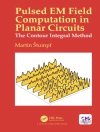This book introduces readers to the polarimetric synthetic aperture radar (Pol SAR) system, its information processing, and imaging applications. The content is divided into three main parts: Part I, on the research scope of Pol SAR, addresses the underlying theory and system design, polarimetric SAR interferometry (Pol In SAR), compact Pol SAR, and calibration of Pol SAR. Part II, which focuses on information processing, highlights the new theories and methods used in Pol SAR, such as statistical properties analysis for images, speckle reduction, image enhancement, polarimetric target decomposition, and classification of Pol SAR target detection. In turn, Part III, on the applications of polarimetric SAR, discusses the geophysical parameter retrieval of Pol SAR data, polarimetric interferometric SAR information processing, compact polarimetric interferometric SAR information processing, and the effects of terrain tilt in azimuth direction on Pol SAR data.
The bookprovides a comprehensive and systematic guide to the system, integrating theory and practice, and has a highly application-oriented focus. Presenting new theories, methods and achievements made in polarimetric microwave imaging in recent years, it offers a valuable asset for researchers, engineers and scientists in the area of remote sensing and radar imaging. It can also be used as a reference book for university educators and graduate students.
Inhaltsverzeichnis
Introduction.- Basics of Polarimetric Synthetic Aperture Radar.- Polarimetric Synthetic Aperture Radar (Pol SAR).- Polarimetric SAR interferometry (Pol In SAR).- Compact Polarimetric SAR and Compact Pol In SAR.- Calibration techniques of Polarimetric Synthetic Apertura Radar.- Analysis of Polarization SAR images.- Statistical properties of Polarimetric SAR images.- Speckle reduction of Polarimetric SAR images.- Enhancement processing of Polarimetric SAR images.- Target polarization decomposition of Polarimetric SAR.- Target detection technology of Polarimetric Synthetic Aperture Radar.- Classification using Polarimetric SAR images.- Surface parameters retrieval using Polarimetric SAR data.- Polarimetric SAR interferometry (Pol In SAR) information processing.- Compact Pol In SAR information processing techniques.- Effects and compensation of terrain tilt in azimuth direction on Pol SAR data.
Über den Autor
Prof. Ruliang Yang Ph D supervisor, graduated from Radar System Engineering Department of the University of Electronics Science and Technology of China at 1965. He was supported by K.C.Wang Foundation, Hong Kong and being a senior visiting scholar in the Engineering Department of Aberdeen University UK.
Prof. Ruliang Yang has been engaging in research of airborne and space borne electronics system engineering for the fifty years.
From 1965 to 1980, he was engaged in research for satellite borne and missile borne electronics equipment of the ballistic trajectory measurement and security system in satellites and missiles. He has taken part in satellite assembly and satellite launched for the Satellites “Orient Red”No1 and “Practice”No1 in china.
After joined the Institute of Electronics Chinese Academy of Sciences at 1980, he was engaged in research of System collectivity engineering for satellite-borne and airborne Synthetic Aperture Radar (SAR) systems. As a chief general designer, he developed the satellite borne SAR and airborne SAR systems. Successively he was engaged in researches of new technology and new systems in microwave imaging radars, such as the high resolution microwave imaging radar system, the polarization Synthetic Aperture Radar, the Inteferematric microwave imaging , the super-resolution information processing, the radar target identify technology, GMTI,the chaos signal SAR and SAR radar control and guide technology etc.
He was awarded the special level prize once and the second level prize once of Progress of Chinese Academy of Sciences, was awarded the first level prize once and the second level prize once of Department of State, and was award National Science and Technology congress prize once. Come out with 6 items invent patents. He has published 240 papers, wrote three books and translated one book. He has supervised more than 50students, who have received their Ph D and master degrees.
He was the deputy director of Institute of Electronics Chinese Academy of Sciences (IECAS), and the director of department of Imaging Radar System IECAS. He is the director member of Unite Remote Sensing Centre of Chinese Academy of Sciences, the commissioner of Radio communication committee of Chinese Communication Academy, the commissioner of Remote Sensing committee of Chinese Space Sciences Academy, the committeeman of Radar and Navigation committee of Chinese Aviation Academy, the vice- chief editor of “Remote Sensing Technology and Application” journal, the committeeman of “Journal of Radars” editor committee. He was award the government special allowance from the State Council.












